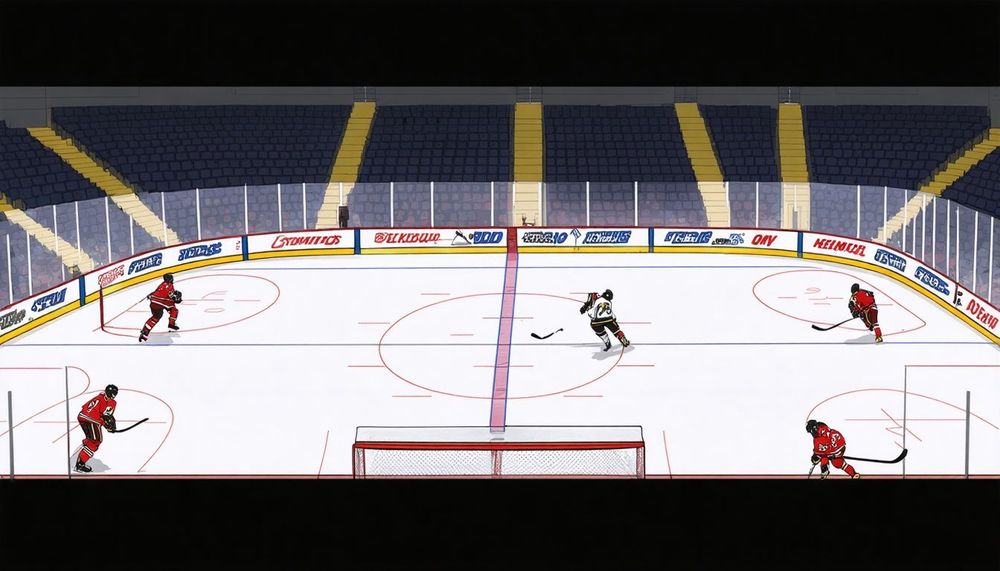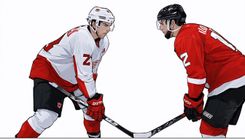Analyzing NHL Prospect Pools: A Closer Look at Team Rankings

In the current analysis of NHL prospect pools, certain rankings reveal both predictable and surprising elements. The evaluation process highlighted a notable observation regarding the correlation between prospect pool strength and team performance in the standings. This year, it appears that many teams have strong playoff aspirations despite having less impressive prospect pools. A variety of factors such as trades, player graduations to the NHL, and underperforming prospects have contributed to this phenomenon. The rankings reflect more of a tiered arrangement than a strict numerical order, particularly in the lower half of the list, where several teams share similarly sparse resources.
The methodology for ranking these prospect pools encompasses a range of variables, including the impact of newly drafted players, trades both to and from teams, player development over the past season, and projections for their upcoming contributions. This complex analysis will undoubtedly continue to evolve as players mature and teams adjust their strategies. For purposes of this ranking, those defined as 'prospects' include any players entering the 2025-26 NHL season as rookies or with limited prior experience, based on a relaxed criterion that allows for minor exceptions regarding game appearances.
Analyzing the Florida Panthers, who have recently clinched two consecutive Stanley Cup titles, raises questions about their prospect pool depth. Despite the franchise's success, their resources appear limited. However, there remain promising players within their system, such as Jack Devine—a right winger from the University of Denver—who has shown potential during a brief stint with the AHL's Charlotte Checkers. Meanwhile, Gracyn Sawchyn is making the transition from the Edmonton Oil Kings to the AHL, anticipated to demonstrate his understanding of the game. Although the Panthers might again vie for another championship, the lack of depth in their prospect system warrants attention.
Meanwhile, the Vancouver Canucks have a prospect pool largely perceived as offering secondary depth options. Although having such depth can be beneficial, it does not enhance their competitiveness in the broader landscape. Jonathan Lekkerimaki is a standout player, and maintaining his development will be crucial for the Canucks’ future, especially when paired with seasoned teammates. Additionally, Tom Willander's transition from Boston University to the professional realm will be under scrutiny as he adjusts his playing style. Another newcomer, Braeden Cootes, possesses the potential to bolster the team if he is nurtured properly.
For the Los Angeles Kings, prospects like Liam Greentree and Kristian Epperson present intriguing narratives. Greentree posted an impressive 119 points in 64 games, deserving recognition as an exceptional talent entering the AHL. Epperson showcased potential during last year's OHL season and is now set to compete at the University of Denver. The Kings are in need of fresh talent to rejuvenate their pool, especially with many top players already solidified as professionals.
The Ottawa Senators interestingly balance their recent playoff run with an underwhelming prospect pool. Players such as Carter Yakemchuk stand out with their unique skill sets, and Yakemchuk's playmaking ability could transition well into professional leagues. Logan Hensler needs time to develop fully, having faced challenges during his freshman season in college hockey. The Senators must cultivate these players effectively if they wish to continue building on their successful trajectory.
The Toronto Maple Leafs face criticism regarding their prospect pool, which seems inadequate given their performance expectations. Despite the struggles, players like Ben Danford show promise, showcasing the intelligence and creativity that could translate into NHL success. Additionally, Easton Cowan is positioned to make his NHL debut this season, although he may require an adjustment period transitioning from the London Knights to the Maple Leafs’ more demanding environment.
On the contrary, the Boston Bruins are making strides within their prospect rankings due to the emergence of players like James Hagens, who was highly sought after. Following a proactive draft strategy, the Bruins not only added Hagens but also Fraser Minten, a promising addition acquired from the Maple Leafs. Their development of these players will be critical as the Bruins navigate their upcoming seasons.
For the Winnipeg Jets, the perspectives surrounding their prospects remain tepid. Brad Lambert faces pressure to perform, with speculation that a change in scenery may be beneficial for his growth. The Jets' acquisition of Brayden Yager from the Penguins is an exciting addition, poised to contribute to their overall success. Sascha Boumedienne offers additional promise, although he may require further time to realize his full potential.
The Edmonton Oilers find themselves buoyed by the presence of standout prospects Matthew Savoie and Isaac Howard. Savoie's dynamic play and Howard's skill set provide a level of excitement for the organization. However, the Oilers must improve their overall drafting strategy to ensure they do not drop in the rankings in future assessments.
The Vegas Golden Knights are another team positioned within the prospect tier that earns mixed reviews. While Matyas Sapovaliv demonstrates solid playmaking abilities, his mobility may need improvement. Jakob Ihs-Wozniak, previously evaluated as a first-round talent, impresses with his shot selection and vision during games.
The Dallas Stars’ prospect pool exhibits a combination of talent, with Emil Hemming emerging as a notable player. His performance in junior leagues has generated excitement, alongside Lian Bichsel’s powerful playing style that could lead to an impactful transition to a full-time NHL role. Lastly, this year's draft gives promise for continued investment in their development systems.
Tampa Bay Lightning prospects display potential, led by Sam O'Reilly, whose relentless work ethic is commendable. The Lightning's recovery from resource depletion requires a delicate balance, with prospects like Ethan Gauthier expected to contribute effectively in the AHL.
In assessing the New York Rangers, the focus shifts to players like Gabe Perreault, who demonstrates a high level of offensive ability. The Rangers will need to invest in the development of their prospects to ensure they capitalize on the players available, such as Malcolm Spence, who is expected to make the most of his opportunity at the University of Michigan this season.
The Colorado Avalanche's prospect pool benefits from the recent acquisition of Gavin Brindley, who adds depth after previous seasons of depletion. Both he and goaltender Ilya Nabokov represent future assets for the organization. Their development will be crucial to maintaining competitiveness within the league.
The New Jersey Devils have cultivated a credible prospect pool that includes standout players like Seamus Casey. His puck-handling skills are noteworthy, but developing consistency will be essential for his adaptation to the NHL. Additionally, Anton Silayev showcases the physicality needed at the next level, and his eventual transition to the NHL remains highly anticipated.
With the introduction of the Utah Mammoth, the approach to building a prospect pool is under scrutiny. Players like Tij Iginla emerge as valuable offensive options while Caleb Desnoyers demonstrates high-level hockey IQ. The new franchise will need to carefully cultivate these talents to maximize their potential.
The Buffalo Sabres continue to struggle in developing their prospects, with players like Radim Mrtka requiring an extended period for growth in a less-than-ideal environment. His development curve will be critical moving forward. Conversely, Konsta Helenius seems to be developing well, indicating potential for a quicker transition to professional hockey.
The Pittsburgh Penguins have shown improvement within their prospect rankings, particularly following talented drafting decisions in recent years. Rutger McGroarty presents enthusiasm for his future contributions, while Bill Zonnon stands as a promising addition to the lineup. Their focus on player development will be vital in advancing these prospects.
The St. Louis Blues benefit from the continued prominence of Dalibor Dvorsky, who possesses a well-rounded set of skills. His growth is key for the team, alongside the addition of first-round pick Justin Carbonneau, who offers significant promise to the organization.
The Nashville Predators have bolstered their prospect pool with the acquisition of players like Brady Martin and Ryker Lee, who exhibit skill levels that could translate well to the professional stage. With additional promising selections, including Teddy Stiga, the Predators are positioning themselves for future success.
The Detroit Red Wings continue to navigate mixed outcomes concerning their prospect rankings. Carter Bear stands out as a significant asset for the organization. As he transitions into professional play, the organization hopes he will emerge as a key contributor in the years to come.
The New York Islanders recently amassed promising talents, including Matthew Schaefer, whose defensive capabilities are noteworthy. Cole Eiserman’s offensive talents are still in development, highlighting the team's focus on nurturing their prospects.
The Carolina Hurricanes have cultivated a reputation for identifying hidden gems in the prospect field, aided by their knack for scouting internationally. Recent selections, including Ivan Ryabkin, reflect their commitment to uncovering top talent. Similarly, Felix Unger Sorum, who showcased his skills at the World Junior Championships, is expected to continue his growth in the AHL.
The Columbus Blue Jackets are experiencing positive momentum within their prospect pool, despite trading away Gavin Brindley. Defenders like Luca Marrelli highlight their depth, and the selection of Jackson Smith aims to address their positional needs moving forward.
The Washington Capitals have fostered a robust prospect pool reflective of their recent successes. Ryan Leonard emerges as a top prospect, but Andrew Cristall and Lynden Lakovic also warrant attention as they develop within the Capitals' system.
As the Minnesota Wild continue to refine their prospect rankings, Zeev Buium leads the charge as a formidable talent. Noteworthy prospects such as Danila Yurov and Ryder Ritchie also hold promise as they adapt to higher levels of competition.
Lastly, the Calgary Flames are recognized for having several promising players, including Zayne Parekh, who appears poised to make a significant impact shortly. Continued observation and development of their roster will determine their future positioning within the league.









